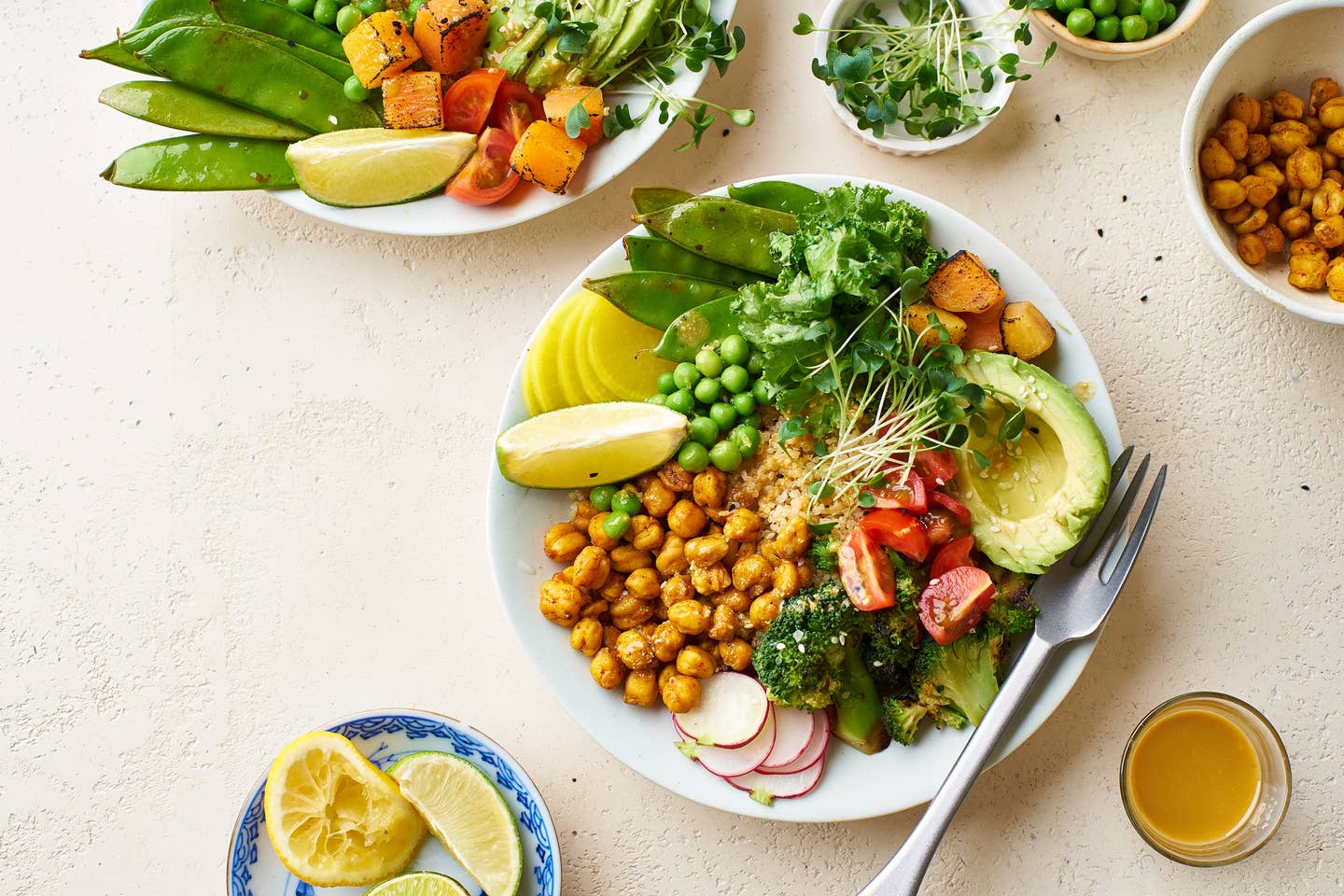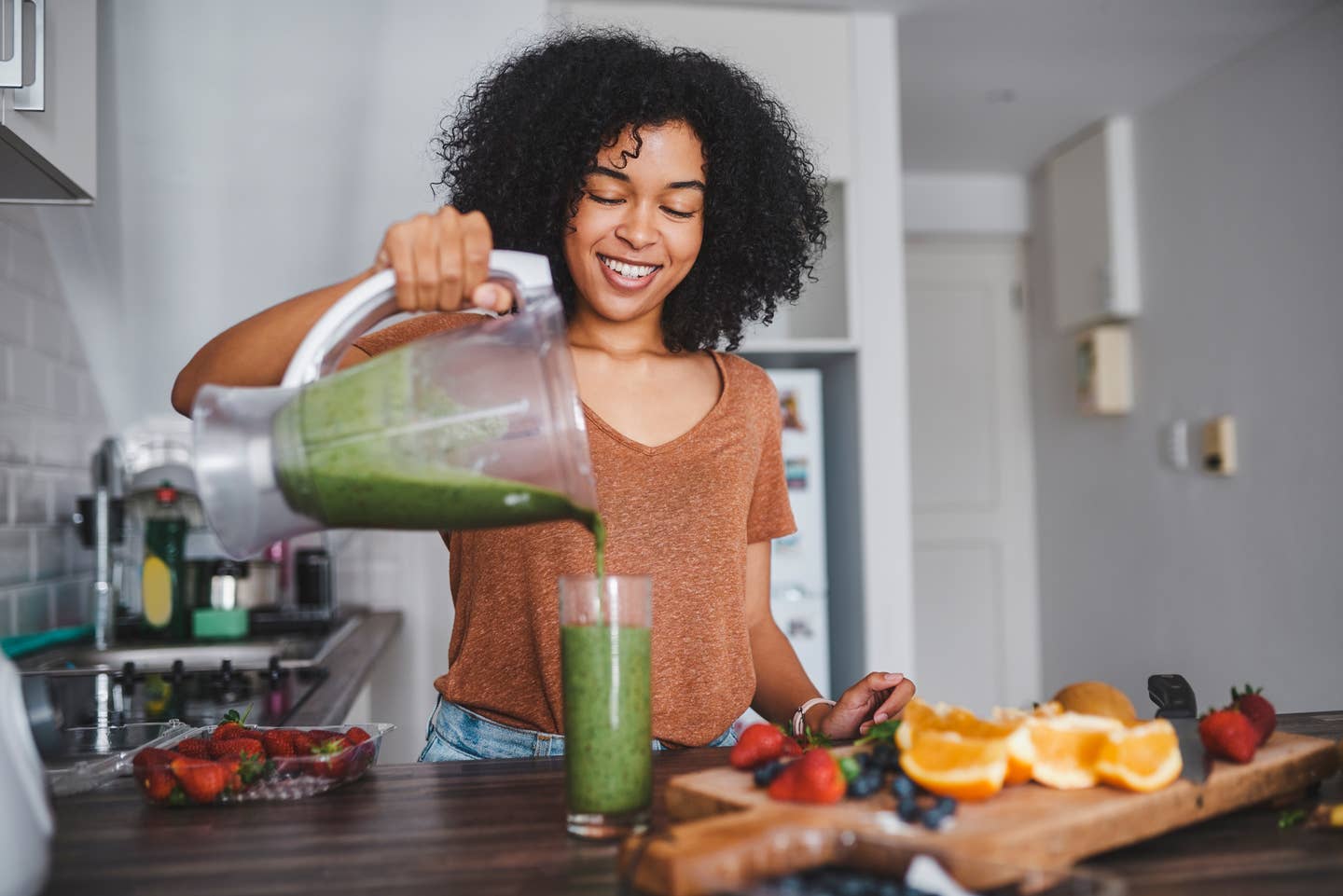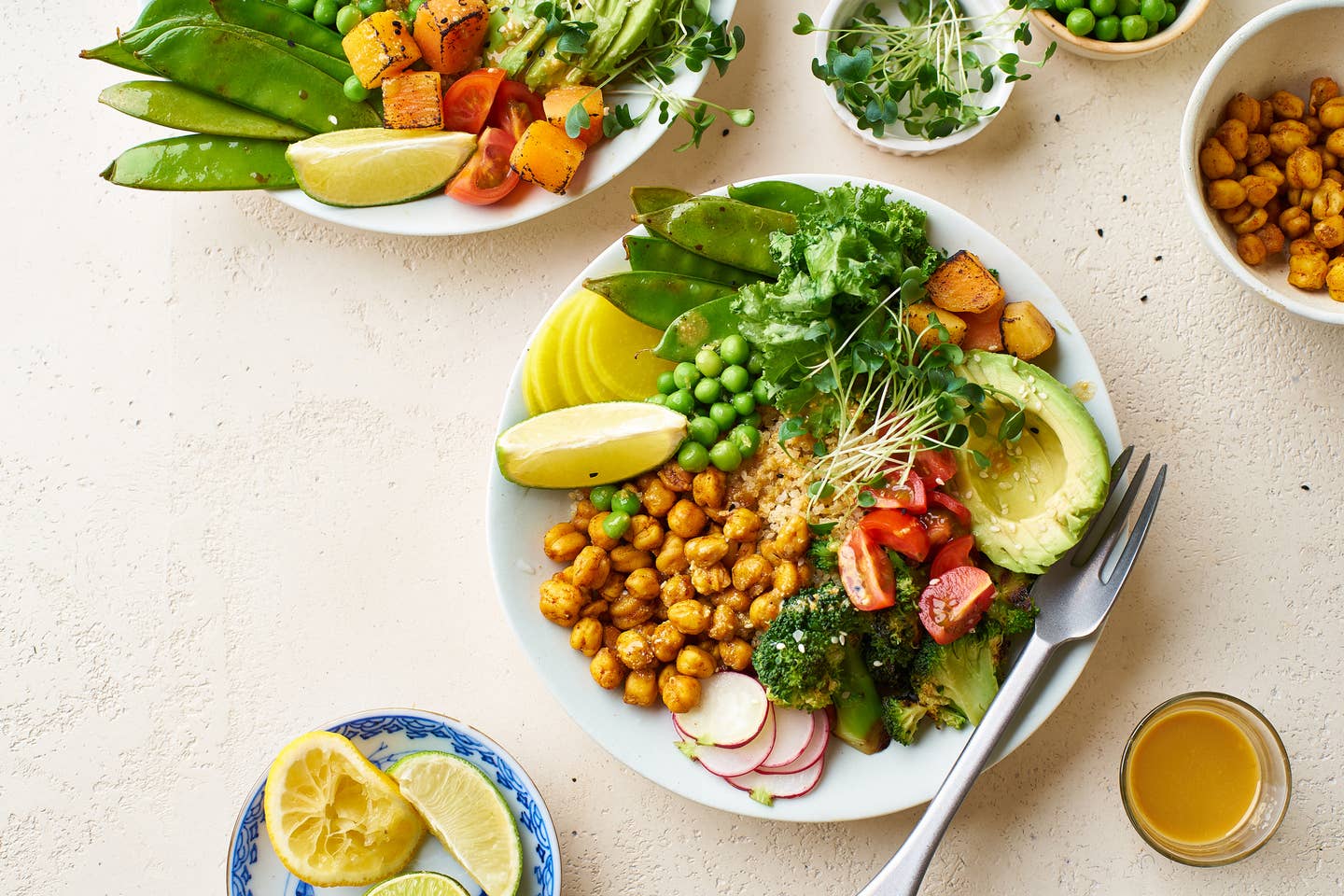
What Is the Healthiest Diet? Your Guide to 6 Popular Diets That Work
To say that diet information is overwhelming is an understatement. We're constantly bombarded with advice, studies, or told that the latest diet is the one we should all be eating to maintain a healthy weight, keep our energy levels up, and live a long, healthy life.
The common thread amongst the world's healthiest diets is that eating more plant-based foods is better for us than animal products, and nations that have the least chronic disease eat the most vegetables, fruits, whole grains, and legumes. Your grandma was right when she told you to eat your vegetables, and a lot of it comes down to common sense.
We're all aware that we need to reduce added sugar and avoid processed foods, and eating what is considered 'real' food, or whole food, is still the best strategy. However, which 'real' foods should we eat – and in what ratios? Should we focus on carbs and whole grains or skip those and focus on fats and protein?
Scientists have argued about macronutrient ratios for years, and many health experts don't agree on which diet is best. Public health recommendations from the Dietary Guidelines for Americans and the American Heart Association advise people to include all food groups and eat nutrient-dense foods (such as vegetables) and base their calorie intake on sex, age, and activity level.
However, with any diet, the big caveat is that what works for one person may not work for another. This is the basis of personalized nutrition, which takes into account your genes, biochemical individuality, health history, and lifestyle to determine what you should eat. This explains why your friend can eat pasta for dinner and not put on weight while you may only have to look at a cookie and feel as if the pounds are about to pile on.
People react differently to foods because of how their digestive and immune systems work. Some people may feel bloated and sluggish after a meal high in protein, while others can't tolerate bread, or have adverse effects to vegetables like eggplant or other nightshades. (Supporting a healthy digestive system may actually resolve these issues, and enable people to eat a more varied diet.)
Unless you're going to investigate your genes and metabolism to find a personalized diet (which is a great idea if you have the resources), most of us need to make an informed decision of which diet to eat based on the latest scientific evidence, plus what foods we tolerate and enjoy, our individual weight loss or health goals, and our value systems.
Here is what the latest research says about the relative health and weight loss benefits of popular diets, including who they may be suitable for, how to follow them, and whether you can do them while trying to eat plant-based. Find the one that's right for you.
1. What is a Plant-Based Diet?
A plant-based diet is one that is either exclusively, or predominantly comprised of foods that grow from the ground – vegetables, fruit, nuts, seeds, legumes, and whole grains – and excludes animal products such as meat, dairy, or poultry. People may choose this diet for their health, the environment, or ethical reasons often eating a combination of whole foods and processed foods to varying degrees but the common denominator is more whole plant-based foods than animal products.
Plant-based diets are endorsed by the Academy of Nutrition and Dietetics for health benefits and the prevention of chronic disease, so long as you include all the essential nutrients. Furthermore, plant-based diets can help someone to maintain a healthy weight.
Not only do plant-based diets impact health, but they also benefit the environment, since animal agriculture is one of the highest contributors of greenhouse gases known to man.
What to eat on a plant-based diet:
- a wide variety of different colored vegetables such as carrots, peppers, cauliflower, green beans, squash, tomatoes, and mushrooms
- leafy greens such as cabbage, kale, bok choi, spinach, and arugula
- starchy vegetables such as sweet potatoes and beets
- fruits such as apples, citrus, berries, mangos, and pineapples
- legumes, beans, and pulses such as chickpeas, kidney beans, and lentils
- soy, tempeh, natto, and miso
- nuts such as walnuts, almonds, hazelnuts, cashews, macadamias, and Brazil nuts
- seeds such as pumpkin, sunflower, flax, hemp, and chia
- healthy fats sources such as avocado, olive oil, and olives
- seitan which is a wheat-based protein
- plant milk such as hemp, oat, and almond
- fresh herbs, dried spices, and nutritional yeast
- sweeteners such as maple syrup, stevia, and coconut sugar in smaller amounts
What to avoid on a plant-based diet:
- all types of meat including red meat, processed meats, and poultry
- fish and seafood
- milk and dairy products such as yogurt, cheese, and cream
- eggs
- animal-based food additives such as cochineal and gelatin (if you are strictly plant-based)
Bottom Line: A plant-based diet can help someone maintain a healthy weight and prevent chronic disease.
The Difference between Plant-Based and Vegan Diets?
You have heard a lot about plant-based foods and eating more plant-based recently, but may wonder: What is the difference between plant-based and vegan?
Being vegan is an ethical lifestyle choice that excludes all animal products and using animals for the production of food, clothing, cosmetics, household products, or as entertainment or any other reason that exploits or harms animals. Vegans usually exclude honey as it is a product of bees (and may be harvested in a way that is harmful to the bees) as well as products that have been tested on animals. Some also exclude foods containing palm oil, due to fact that palm growing has led to deforestation which has an impact on animals and biodiversity.
Vegans generally stay away from any food that is derived from animals, harms animals, or where animals are hurt or exploited in the process of making it. For instance, some wine uses egg whites or fish bladders in the "fining" process to "clarify" the wine as it's being filtered and particles from the grape plant are removed. Vegan is not synonymous with healthy, however, since it's possible to eat processed food or added sugar and still be vegan. Choosing a diet of whole foods that are plant-based and minimally processed is considered a healthy approach.
Bottom line: A diet of whole plant-based foods that is full of plant-based proteins such as legumes, nuts, seeds, and high in fiber from vegetables, leafy greens and fruit is healthier for you than one that includes processed foods. There are many ways to be vegan, some healthy, some not, but the more healthy whole plant-based foods you eat the better.
2. What is a Flexitarian diet?
A flexitarian diet is also what some people also refer to as 'semi-vegetarian' or even pescatarian since it allows the dieter to be plant-based most of the time but also includes more flexibility as merited by the situation. Flexitarianism is a growing diet trend that involves eating most of your calories from plant foods but occasionally including animal products such as lean meat, fish, dairy, and eggs.
Some people use a flexitarian approach to try out eating plant-based or to gradually phase out animal products, and this might be an easier way for them to make the change. This approach can help someone achieve eating 95 to 100 percent plant-based, which is the best way to eat for health and longevity according to the Blue Zones research, by Dan Buettner, who looked at the diets and lifestyles of the world's longest-living people.
A 2016 review of the evidence for flexitarian diets and health suggests there are benefits for weight, metabolic health, blood pressure, diabetes, and inflammatory bowel disease. The authors noted that there is more tendency for females than males to eat this way, and men should be encouraged to try it too.
What you can and cannot eat on a Flexitarian diet
Someone on a flexitarian diet can choose specific days to eat plant-based meals or may choose specific circumstances, such as only eating animal products when out dining with friends.
What to eat most of the time:
- vegetables and fruits
- whole grains such as whole-wheat bread, rice, quinoa, barley, and oatmeal
- legumes such as beans and lentils
- nuts, seeds, and nut butters
- healthy fats such as olive oil, olives, and avocados
What to eat occasionally:
- lean meat
- fish
- eggs
- dairy foods
Because flexitarian diets allow for a flexible approach to plant-based eating, and are often done for health reasons, or to benefit the planet, many people on a flexitarian diet only choose to eat free-range or pasture-fed eggs and meat.
Bottom line: A flexitarian diet can help some transition to a more plant-based diet which is beneficial for health, weight, and longevity.
3. What is a Vegetarian diet?
A vegetarian diet excludes meat and fish but includes dairy products and eggs. Those who eat a vegetarian diet and additionally avoid eggs refer to their diet as Lacto-vegetarian.
A 2014 study on Seventh Day Adventists in the US revealed that a vegetarian diet was associated with lower incidents of mortality from cardiovascular disease and all causes, compared to non-vegetarian diets. Interestingly, the authors noted that results weren't the same in the British vegetarians in the EPIC-Oxford study. It seems that the Adventists were motivated by health and ate more fiber and vitamin C than their British counterparts, who may have chosen to be vegetarian for ethical rather than health reasons.
A healthy whole-food-rich vegetarian diet includes eating every color of the rainbow in vegetables, fruits, whole grains, nuts, seeds, and legumes. However, it's also possible to be an 'unhealthy' vegetarian, choosing saturated fat-filled cheese and full-fat dairy, as well as sugar-laden processed foods, which increases the risk of weight gain and chronic disease.
What you can and cannot eat on a Vegetarian diet
A vegetarian diet commonly includes both eggs and dairy, but Lacto-vegetarians also avoid eggs.
Pescatarians are similar to vegetarians, but also eat fish. Some pescatarians also stay away from dairy but in general pescatarians eat fruits, veggies, nuts, seeds, whole grains, beans and avoid eating meat and poultry.
What you can eat:
- a variety of different vegetables and fruits
- nuts, seeds, and nut butters
- legumes, beans, and pulses
- whole grains such as whole-wheat bread, rice, quinoa, barley, and oatmeal
- eggs and dairy products such as milk, yogurt, and cheese
- healthy fats such as olive oil, olives, and avocados
- honey
What to avoid:
- all types of meat and meat products
- fish and seafood
- animal-based food ingredients such as lard, gelatine, and cochineal
Bottom line: Research shows that healthy vegetarian diets can reduce the risk of early death and chronic disease. But to lose weight keep your dairy (and particularly cheese) in check and avoid added sugar. If you are eating fish, you are following a pescatarian diet.
4. What is the Mediterranean diet?
The Mediterranean diet is the star of the show when it comes to evidence-based diets for health and longevity. A 2021 review in Nutrients found that the Mediterranean diet coupled with physical activity is 'the winning combination' to counteract chronic diseases and promote healthy aging. The authors note that previous research indicates that strict adherence to the Mediterranean diet is correlated with the following health improvements:
- lower risk of mortality from all diseases
- lower risk of mortality due to cardiovascular disease
- lower risk of tumor occurrence and progression
- lower incidence of Parkinson’s and Alzheimer’s disease
Additionally, while the Mediterranean diet maintains a healthy body mass index (BMI, a reduced-calorie version of the diet is a safe and reliable strategy for weight loss, notes the review.
In a recent study published in the journal of Heart, researchers found that a modified “greener” version of the Mediterranean diet resulted in both weight loss and improved cardiovascular and metabolic risk factors. The Green Mediterranean diet is one with less animal protein and more plant-based protein, so you eat less cheese, dairy, poultry, lean meat, and more plant-based protein such as legumes, vegetables, nuts, seeds, and fruit.
What you can and cannot eat on a Mediterranean diet?
While there are different versions of the Mediterranean diet including the 'greener version', the following is a widely accepted definition of the traditional diet according to an RD:
What to eat on the Mediterranean diet:
- seasonal, fresh vegetables
- fresh fruit for dessert
- legumes
- whole grains
- nuts
- olive oil
- low to moderate amounts of wine consumed with meals
- moderate amounts of cheese and yogurt
- low to moderate amounts of fish and poultry
- honey only occasionally as a sweetener
What to avoid on the Mediterranean diet
- red meat – eat only in small, infrequent amounts
- refined grains such as white bread and pasta
- processed foods
- sugary drinks and desserts
- butter – replace it with olive oil instead
The traditional Mediterranean diet emphasizes an abundance of plant foods but the greener version which is lower in animal foods and supplemented with walnuts, green tea, and Mankai duckweed showed greater improvements over six months in cardiometabolic health and waist circumference in a 2020 study on overweight adults.
Bottom line: The Mediterranean diet is an evidence-backed diet for health and longevity if people adhere to it. A greener version lower in animal products and supplemented with additional beneficial plant foods may be better for health and weight management than the traditional diet.
5. What Is the Keto diet?
The keto, or ketogenic diet, is a high-fat, low carbohydrate diet that people use for fast weight loss even though it's widely known to be unhealthy long-term. By eating fewer than 10 percent of your calories from carbs, it restricts the body's usual source of glucose (from carbohydrates) and because of the high fat intake, switches over the body's energy system to metabolize fat, which gets broken down to ketones, a much less efficient fuel system.
By eating fewer carbs and producing less insulin, and breaking down fatty acids into ketones for fuel, the diet does work for quick weight loss. However, despite its popularity, the diet is nearly impossible to stick to and can cause adverse health effects ranging from the 'keto flu' where you have low energy, to longer-term damage to your organs.
For example, a 2021 review notes that the keto diet leads to more emergency room visits and admissions for dehydration, electrolyte disturbances, and hypoglycemia. On the plus side, the keto diet may be suitable for obese patients or improving blood pressure and glucose regulation in people with diabetes, according to the review, but it's not recommended for anyone with cardiovascular disease or concerns, since it can cause LDL or "bad" cholesterol to spike.
The Academy of Nutrition and Dietetics advises that keto diets are severely restrictive, with followers eliminating healthy whole grains, antioxidant-rich fruits, and immune-boosting foods like vegetables – just because they contain carbs. Since carbohydrates are our body's main energy source, and plant-based foods contain essential nutrients, the keto diet can cause health issues over time. Furthermore, the diet is not suitable for people with certain health conditions or a history of eating disorders.
Additionally, people are recommended to follow the diet for a limited number of weeks, and under a doctor's supervision, since monitoring kidney function is important, since going into ketosis puts a strain on the kidneys. In one tragic story, a popular Bollywood actress died at age 27 when following a keto diet, and her family blamed the diet for her kidney failure.
What you can and cannot eat on a Keto diet
The keto diet specifies that macronutrients are eaten in the following ratios:
- 55 percent to 60 percent of calories from fat
- 30 percent to 35 percent of calories from protein
- 5 percent to 10 percent of calories from carbohydrates
The traditional keto diet (as defined by sources such as Atkins.com) is heavy on meat, fish, eggs, full-fat dairy, and other unhealthy saturated fats. However, it is possible to follow a keto-friendly plan on a plant-based keto diet that is healthier, more nutrient-dense, and fiber-rich, by eating foods such as avocado, coconut oil, nuts, seeds, and other polyunsaturated fats.
What to eat on a plant-based keto diet:
- nuts and nut butter made from macadamias, pecans, walnuts, or Brazil nuts
- seeds such as pumpkin and flax
- avocados
- coconut and coconut oil
- tofu and tempeh
- non-starchy vegetables such as leafy greens, cauliflower, zucchini, peppers, mushrooms, broccoli, green beans
- seaweeds including nori, kelp, and dulse
- small quantities of berries
- stevia as a sweetener
What to avoid on a plant-based keto diet:
- starchy grains such as bread, pasta, and rice
- starchy vegetables such as sweet potato, corn, potatoes, tams, beets, and squash
- legumes such as beans and lentils
- fruits and fruit juices
- sugary foods and drinks
- alcohol
- maple syrup and agave syrup
It's important to note that people eating a strict plant-based diet don't need to restrict their diets any further than they do already. Vital nutrients such as vitamins, amino acids, vitamins, minerals, and antioxidants are contained in the list of foods that keto excludes (such as fruits), so it's unhealthy to try to sustain it for long periods of time. Someone who eats a plant-based diet should consult a medical professional or dietitian before starting a keto diet.
Bottom line: A keto diet for weight loss is meat and dairy heavy and may cause adverse health effects. Although it's possible to follow a plant-based keto diet, the restrictive nature makes it unadvisable to follow for long periods of time and someone should speak to a doctor first.
6. What Is the Paleo diet?
The paleo diet is based on what our ancestors ate in Paleolithic times (between 2.5 million years ago to 10,000 B.C) when they were hunter-gatherers. Some research has suggested that eating foods you could hunt or gather benefits for weight loss, athletic performance, and the prevention of cardiovascular disease although results are inconclusive.
What you can and cannot eat on a paleo diet
A traditional paleo diet emphasizes animal products such as meat, fish, and eggs that make it difficult for people who want to eat more plant-based foods to follow. However, the functional medicine practitioner and author Dr. Mark Hyman coined the term 'Pegan' as a combination of a paleo and vegan diet.
According to Dr. Hyman, who recommends the Pegan diet to his patients, this approach combines the best aspects of both diets, encouraging anti-inflammatory whole foods and no added sugar or processed wheat or flour. Furthermore, people can personalize their food choices according to their health conditions, preferences and needs. The Pegan diet might be ideal for those who want to transition to a more plant-forward way of eating, or those that have inflammatory, digestive, or immune-related health conditions.
What to eat on a Pegan diet:
- low-glycemic vegetables and fruits - this should make up 75% of the plate
- nuts (not peanuts) and seeds
- coconut
- avocados
- sardines
- olive oil
- lentils and beans sparingly
- gluten-free whole grains sparingly
What to avoid on a Pegan diet:
- gluten in grains such as wheat and rye, eat heirloom wheat (Einkorn) instead
- big starchy beans such as butter beans
- meat and animal products, although they can be eaten sparingly as a 'condiment'
- sugar and sugary foods and drinks
- dairy products, only eat organic goat products occasionally
Bottom line: The Paleo diet is difficult to follow if you are plant-based, but a Pegan diet combines the best aspects of a vegan and Paleo diet and may help people to lose weight and prevent or treat inflammatory and digestive conditions
So what is the healthiest diet?
Plant-based diets and the Mediterranean diet are backed by dozens of studies that provide convincing evidence that eating plant-based whole foods is the healthiest choice for disease prevention, long-term weight loss, and maintaining a healthy weight. You're never going to meet a health expert who tells you to avoid vegetables, so filling your plate with every color of the rainbow of vegetables is a safe bet for your health.
To lose weight, focus on eating real foods and ingredients that are as natural, whole, and as fresh as possible. It's about what you add as well as avoid when losing weight and a fiber-rich diet can help keep you full and avoid snacking as well as balance your blood sugar. This all helps you to lose weight. As far as how much protein, carbs, and fats to eat, it depends on your weight status, your overall health, and your training goals.
For example, if someone wants to lose weight they may skip the rice or noodles and replace this with a smaller serving of starchy vegetables such as sweet potato, and add more leafy greens or protein to the plate.
It's equally important to enjoy food and the social aspect of eating with our friends and family. Some people successfully enjoy treats as part of a healthy balance and subscribe to the 80/20 rule of eating healthy clean whole food 80 percent of the time and enjoy treats or snacks that suit them for the remaining 20 percent of their calories. This may work for some dieters, but not others who find that it's a slippery slope (to adding too many calories back).
Regardless of which diet you choose to be healthy and lose or maintain a healthy weight, you should always combine a life of healthy eating with daily physical activity.
Bottom Line: The Best Diet for You Is a Matter of Individual Choice
To be your healthiest, fill at least half of your plate with vegetables as a starting point – and add in macronutrients such as protein, complex carbs, and healthy fats according to your goals and body type. No matter which diet you choose, keep active!
For more great content like this, check out The Beet's Diet & Weight Loss articles for the latest research and advice on how to maintain a healthy weight or lose weight on a plant-baed diet.
The Top 20 Veggies with the Most Protein
Everyone who contemplates going plant-based has the same question: where do I get my protein? Simple answer: Vegetables! Contrary to the popular belief that you have to eat animal protein to get enough into your diet, one of the best ways to get protein is by eating vegetables. Animals provide protein because they're fed a diet of plants that are high in protein, so if you cut out the middleman -- or middle cow or middle chicken in this case -- you can get the same protein just by going direct-to-the-source.
1. Soy Beans
Soybeans are a legume but they are such a great source of protein that we had to lead the veggie list with it. There is more protein in just one ounce of soybeans than a cup of sliced avocado!1 cup equalsProtein - 28.6gCalories - 298Carbs - 17.1gFiber - 10.3gCalcium - 175mg
2. Peas
If the pod, that peas are grown in, is split down the middle, that is an indicator they are ripe. Seeds inside the pod vary and can be green, white or yellow. 1 cup equalsProtein - 8.6gCalories - 134Carbs - 25gFiber - 8.8gCalcium - 43.2 mg
3. Corn
Fresh corn is a great source of energy for those who like to stay active. Protein isn't all that corn has to offer. Corn provides the body with potassium and B vitamins. 1 cup equalsProtein - 5.4gCalories - 177Carbs - 123gFiber - 4.6gCalcium - 4.9mg
4. Artichoke Hearts
Artichokes are part of the sunflower family. The fiber in artichoke hearts is great for supporting digestion. 1 cup equals Protein - 4.8g Calories - 89 Carbs - 20g Fiber - 14.4g Calcium - 35.2mg
5. Asparagus
If not properly stored, Asparagus tends to go bad quickly, To elongate freshness, put damp paper towels around the stems, or place the entire asparagus bunch in a cup of water (like flowers) to maintain freshness longer. 1 cup equals Protein - 4.4g Calories - 39.6 Carbs - 7.4g Fiber - 3.6g Calcium - 41.4mg
6. Brussel Sprouts
Brussel sprouts have more Vitamin C than an orange. If your Brussel sprouts have a rancid odor that is an indicator you overcooked them. The smell occurs because the sprouts are composed of a great amount of sulforaphane. 1 cup equals Protein - 4g Calories - 56.2 Carbs - 40g Fiber - 4g Calcium - 56.2mg
7. Broccoli
If you are trying to lose weight broccoli is a great addition to your diet because it consists of 90 water and is also high in fiber. 1 cup (chopped) equals Protein - 3.8g Calories - 54.6Carbs - 11.2g Fiber - 5.2g Calcium - 62.4mg
8. Mustard Greens
Mustard greens provide the body with tons of Vitamin A, Vitamin C, Vitamin K and fiber. Adding steamed mustard greens into your diet has been known to lower cholesterol and reduce inflammation. 1 cup equals Protein - 3.2 g Calories - 21 Carbs - 2.9g Fiber - 2.8g Calcium - 104mg
9. Avocado
Avocado is commonly mistaken as a vegetable but it is technically a fruit. This fruit had to be included in our veggie list because it isn't just tasty but super nutritious. Avocados are packed with protein but they are a great source of potassium and fiber. Avocados are a great addition to any salad, sandwich and even smoothie! 1 cup equals Protein - 3.0 g Calories - 240 Carbs - 12.8 g Fiber - 10.1g Calcium - 18 mg
10. Onions
Onions are an unappreciated food hero since they provide 20 percent of your daily Vitamin C and deliver an abundance of antioxidants that can reduce inflammation.1 cup (chopped) equalsProtein - 2.9gCalories - 92.4Carbs - 21.3gFiber - 2.9gCalcium - 46.2mg
11. Beets
The entire beetroot is edible including the leaves which contain loads of vitamin A, calcium, iron and potassium. Beetroot is high in sugar but is considered one of the most nutritious veggies used in salads and soups. 1 cup equals Protein - 2.8 g Calories - 74.8 Carbs - 17g Fiber - 3.4g Calcium - 27.2mg
12. Oyster Mushrooms
Oyster mushrooms are commonly seen in Chinese dishes. They grow best in a controlled environment indoors. Oyster mushrooms have so many nutrients to offer besides protein such as iron, calcium, zinc and folic acid. 1 cup (raw and sliced) equals Protein - 2.8g Calories - 37 Carbs - 5.6g Fiber - 2.0g Calcium - 2.6mg
13. Bok Choy
Bok Choy is a member of the mustard family. One of the oldest cultivated vegetables in the world, Bok Choy means "white vegetable” and is a great source of vitamins A, C, B6, K, and E, magnesium, potassium, iron, manganese, and calcium. 1 cup equals Protein - 2.7 g Calories - 20.4 Carbs - 3.1g Fiber - 1.7g Calcium - 158mg
14. Green Beans
Green beans are a great source of vitamins B, C and K, and minerals such as magnesium, iron and manganese. Green beans should be cooked before eating, to destroy lectins. China is the biggest grower of green beans in the world, exporting over 15 million tons a year. 1 cup equals Protein - 1.8 g Calories - 31 Carbs - 7 g Fiber - 2.7 g Calcium - 37 mg
15. Cauliflower
The most nutritious way to consume cauliflower is steamed. Don't get intimidated by orange, purple or green cauliflower. All three types have the same benefits as white cauliflower. 1 cup equals Protein - 2.2g Calories - 28.6 Carbs - 5.4g Fiber - 2.8g Calcium - 19.8mg
16. Turnip
You can eat the entire plant, root and leaves. The turnip root is high in vitamin C and the greens are high in vitamins A, C, E, B6 and K, believed to counter inflammation. Add turnip roots to soup, or mash them. Add them to salads. 1 cup equals Protein - 1.6g Calories - 28.8 Carbs - 6.3g Fiber - 5.0g Calcium - 197mg
17. Alfalfa Sprouts
Alfalfa sprouts might be little but they sure are powerful. Plus they're quick and easy to grow. They are loaded with Vitamin C, Vitamin K, Iron and more. But because they have been known to carry bacteria, make sure to fully cook alfalfa sprouts if you have a fragile immune system or are pregnant. 1 cup equals Protein - 1.3 g Calories - 8 Carbs - 0.7 g Fiber - 0.6 g Calcium - 10.6 mg
18. Tomatoes
Keep your tomatoes fresher for longer by storing them stem down. When exposed to sunlight the Vitamin C in a tomato will diminish. 1 cup equals Protein - 1.3g Calories - 26.8 Carbs - 5.8g Fiber - 1.8g Calcium - 14.9mg
19. Zucchini
Zucchini has an abundance of potassium, even more than a banana! The reason zucchini isn't high in calories is that it is made up of 95% water. 1 cup equals Protein - 1.2g Calories - 28.8 Carbs - 7.1g Fiber - 2.5g Calcium - 23.4 mg
20. Spinach
Spinach is filled with Vitamin A, Vitamin E, Vitamin K, fiber and protein. The best part about spinach is you can sauté it, blend it or eat it raw! Spinach is best grown in rainy and cool weather. 1 cup equalsProtein - 0.9gCalories - 6.4Carbs - 1.0 gFiber - 0.6gCalcium - 27.7 mg
More From The Beet






